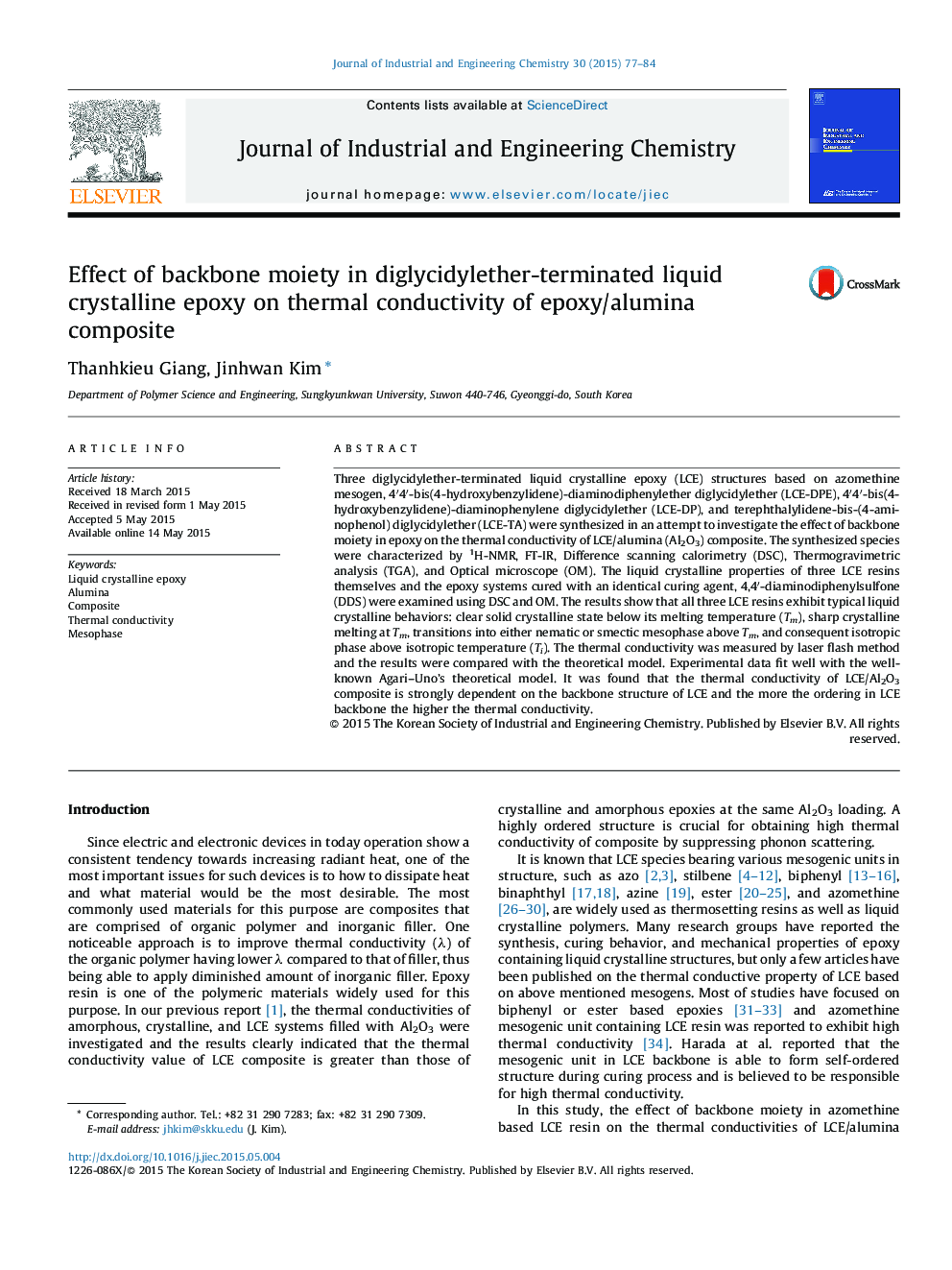| کد مقاله | کد نشریه | سال انتشار | مقاله انگلیسی | نسخه تمام متن |
|---|---|---|---|---|
| 227141 | 464817 | 2015 | 8 صفحه PDF | دانلود رایگان |
Three diglycidylether-terminated liquid crystalline epoxy (LCE) structures based on azomethine mesogen, 4′4′-bis(4-hydroxybenzylidene)-diaminodiphenylether diglycidylether (LCE-DPE), 4′4′-bis(4-hydroxybenzylidene)-diaminophenylene diglycidylether (LCE-DP), and terephthalylidene-bis-(4-aminophenol) diglycidylether (LCE-TA) were synthesized in an attempt to investigate the effect of backbone moiety in epoxy on the thermal conductivity of LCE/alumina (Al2O3) composite. The synthesized species were characterized by 1H-NMR, FT-IR, Difference scanning calorimetry (DSC), Thermogravimetric analysis (TGA), and Optical microscope (OM). The liquid crystalline properties of three LCE resins themselves and the epoxy systems cured with an identical curing agent, 4,4′-diaminodiphenylsulfone (DDS) were examined using DSC and OM. The results show that all three LCE resins exhibit typical liquid crystalline behaviors: clear solid crystalline state below its melting temperature (Tm), sharp crystalline melting at Tm, transitions into either nematic or smectic mesophase above Tm, and consequent isotropic phase above isotropic temperature (Ti). The thermal conductivity was measured by laser flash method and the results were compared with the theoretical model. Experimental data fit well with the well-known Agari–Uno's theoretical model. It was found that the thermal conductivity of LCE/Al2O3 composite is strongly dependent on the backbone structure of LCE and the more the ordering in LCE backbone the higher the thermal conductivity.
Journal: Journal of Industrial and Engineering Chemistry - Volume 30, 25 October 2015, Pages 77–84
